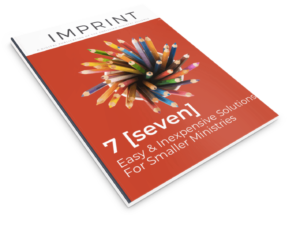
“This article was written by our friends at Aplos, who just released an all-new Donor Management software platform for nonprofits. The link to the original article can be found here.”
Many nonprofits dream of the day they’ll land a big donation from a major donor. Unfortunately, the times a major donor comes knocking are few and far between, especially when you’re a small operation. Your first reaction would be to explore different methods to engage these big fish, and while it never hurts to test every avenue, it may be more practical to go for the others in the pond—finding mid-level donors who might not give checks that’ll change everything overnight, but can be by far the most responsible for keeping your lights on.
So, without further ado, here are six tips to keep in mind when trying to hook a mid-level donor for your organization.
- Mid-level donors often look like low-level donors. You may expect them to give small at first, but when they become more engaged with your nonprofit and start believing in your mission, those donations will increase. Be sure you’re doing everything you can to steward these people, and don’t let them fall to the wayside when someone more fiscally attractive crosses your path. You never know when these low-level people will pay off big time.
- In relation to the first point; organizations need to take an active stance to drive low-level donors to the middle of the pyramid—and engage them with the right message. But how do you know what the right message is? Make an attempt to profile your donors.
- Not only will profiling help find ways to make your existing donors better respond, but once you’re able to identify commonalities between them, it will help you identify prospects that will have a higher likelihood of giving. After all, seventy percent of mid-level gifts secured through face-to-face strategy were from non-donors.
- If you have a system in place to process automatic monthly credit card transactions, monthly giving commitments can be extremely valuable.
- Direct, personalized attention in a cost-efficient manner will help propel your organization into a person’s top three organizations. However, avoid having your correspondence sound impersonal or cold—it’s easy for someone to tell when a message sent to them isn’t genuine, especially when that message includes an ask.
- Be sincere about developing a relationship with a donor from square one; cultivating is difficult and requires a lot of work, but it will cause your donors to believe in your organization not only with their brains, but with their hearts. After all, at the end of the day, it’s not about what’s in their wallet—it’s about the relationship.
Editor’s Note: For more information about Aplos, please visit their website and let them know that we sent you by using Referral Code: ACN.


